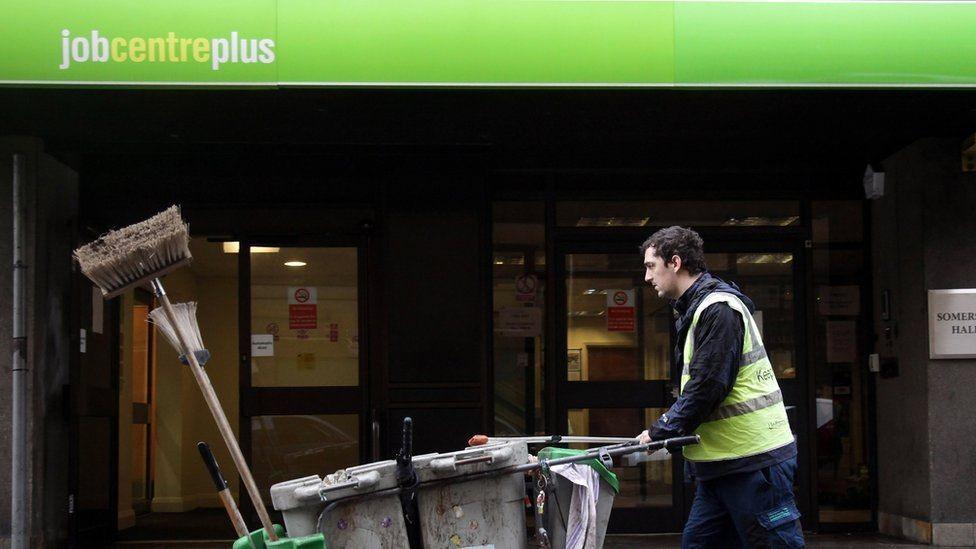Unemployment rate across Scotland rises to 4%
- Published
- comments

Scotland's unemployment rate rose to 4% in the three months to June, according to latest figures.
Data from the Office For National Statistics (ONS) reveals the figure is up 0.9% on the previous three months.
However, the Scottish figure is still below the rate for the UK as a whole, which stands at 4.2%
Meanwhile, wages grew at a record annual pace of 7.8% between April and June - the highest annual growth rate since comparable records began in 2001.
The latest ONS report also shows the percentage of Scots over 16 years old and in work fell by 1.1% to 74.2%.
The data showed that 109,000 people aged 16 and over were out of work over the period April to June - up by 24,000 on the first three months of the year.
There were 2,652,000 Scots in work, down by 31,000 on the January to March figures.
Scotland's employment rate now stands at 74.2% - lower than the corresponding rate of 75.7% for the UK as a whole.

Wellbeing Economy Secretary Neil Gray said the hospitality industry was still "facing recruitment challenges"
While Tuesday's data showed a rise in the unemployment rate in Scotland compared with the previous quarter, the proportion of people who were out of work was lower than the national UK figure.
Across the UK as a whole, the unemployment rate for England stood at 4.2%. In Wales, the unemployment rate was 4.8% and in Northern Ireland it was 2.7%.
Wellbeing Economy Secretary Neil Gray said the rise in the jobless rate "reflects the challenges facing the economy amid the ongoing cost of living crisis, compounded by still high inflation and interest rates".
He added: "The Scottish government is committed to supporting more people into work - including those with a disability, health conditions and caring responsibilities - through employability and skills support, as well as improved access to flexible working."
Mr Gray said industries including hospitality and agriculture were still "facing recruitment challenges".
He also called for an "urgent reassessment of UK government immigration policy" to increase Scotland's access to international labour.


Scotland's unemployment rate remains low by past standards. Even after rising from 3.1% to 4%, it is still lower than the UK figure. But a sharp deterioration in the second quarter of the year is a warning light on the economic dashboard.
A couple more of them, and that would be an unwelcome trend.
With the number of Scots seeking work rising, the other key numbers also point in the wrong direction. The number of Scots in work dropped at an unexpectedly steep rate, by more than 1.1 percentage points.
These may seem small changes, but if we assume the labour force survey translates into real people and real jobs, that is a drop of 31,000 fewer people in employment in the second quarter of the year compared with the first three months, and 25,000 more people looking for jobs.
The third variable in these monthly figures is economic inactivity - those who are not available for work due to long-term illness, because they're caring for family or due to full-time studies.
The UK figure points to long-term illness being at its highest level since the ONS started using this measure. The sample size in this survey does not give us sufficiently reliable data to make the same conclusions about Scotland, but it's hard to think of a reason why it would be significantly different.
Not only has 'inactivity' risen in the most recent quarter by around 14,000: it has risen since last year by 22,000.
In economic terms, these are the people who could be important to helping pull the Scottish economy out of its doldrums. They could be helping pay income taxes for public services.
So they are a policy challenge, if only to find out in more detail what is going on, and why - in similar circumstances - this month's figures are worsening at a faster rate in Scotland than other parts of the UK.
- Published15 August 2023

- Published11 July 2023
